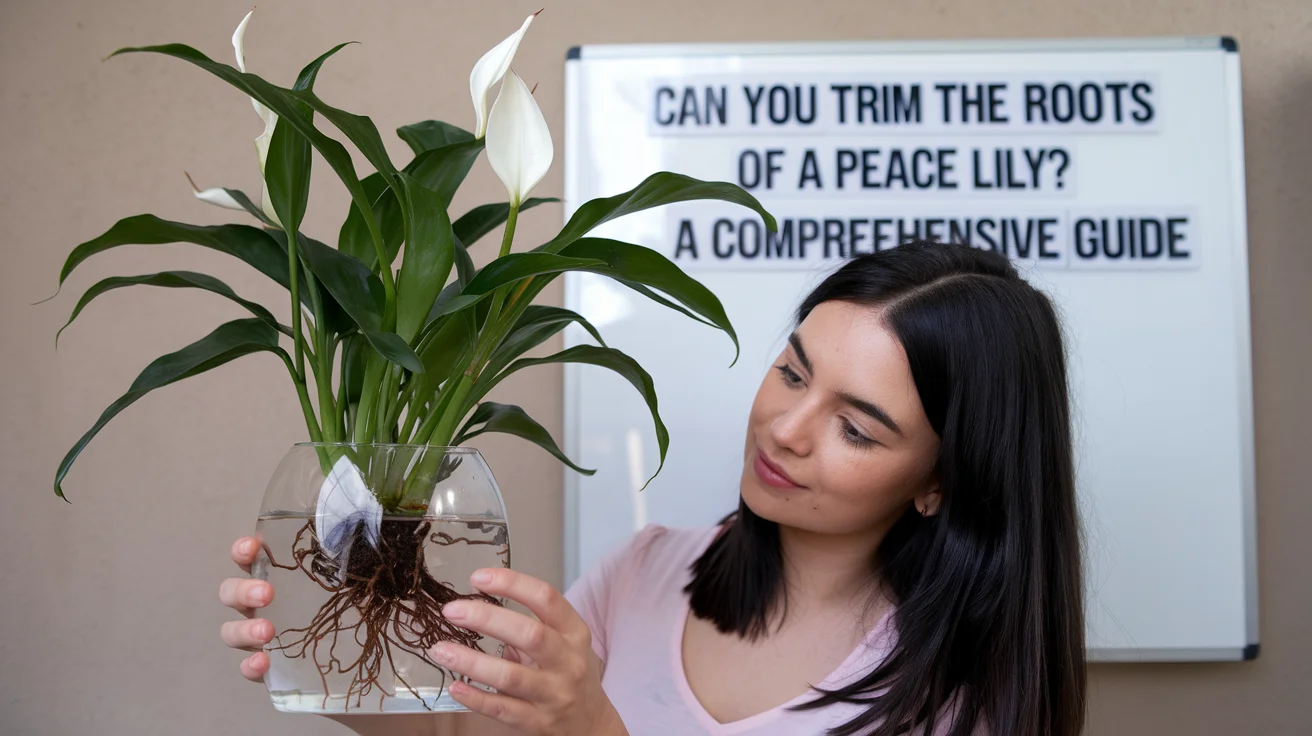Many plant lovers often find themselves asking, “Can you trim the roots of a peace lily?” Peace lilies (Spathiphyllum) are popular houseplants known for their elegant white flowers and lush foliage. While these plants are relatively easy to care for, there may come a time when trimming their roots becomes necessary. In this article, we will explore the reasons for root trimming, the proper techniques to do so, and how to care for your peace lily afterward.
Understanding the Peace Lily’s Root System
Peace lilies have a fibrous root system that can grow quite extensively. These roots are essential for absorbing water and nutrients. However, if the plant becomes root-bound—meaning the roots have filled the pot and are circling around the bottom—it can lead to several issues, including poor growth and wilting leaves.
Signs Your Peace Lily Needs Root Trimming
- Root Bound: If you notice roots growing out of the drainage holes or circling around the pot, it’s time to take action.
- Stunted Growth: If your peace lily has stopped growing or blooming, it may not have enough space for its roots.
- Frequent Wilting: If the plant wilts quickly after watering, it may indicate that the roots are struggling to absorb moisture.
The Benefits of Trimming Roots
Trimming the roots of your peace lily can provide several benefits:
- Encourages New Growth: Removing old or damaged roots can stimulate new root growth, leading to a healthier plant.
- Improves Drainage: Trimming can help ensure that water flows freely through the soil, preventing root rot.
- Reduces Plant Stress: A healthy root system allows your peace lily to absorb nutrients and water more efficiently, reducing overall stress.
How to Trim the Roots of a Peace Lily
If you decide that trimming the roots is necessary, follow these steps for a successful process:
1. Gather Your Supplies
Before starting, gather the following tools:
- A clean, sharp pair of scissors or pruning shears.
- A new pot (if repotting).
- Fresh, well-draining potting soil.
- Water for post-trimming care.
2. Choose the Right Time
The best time to trim roots is during the growing season, which is typically spring or early summer. During this time, the plant can recover more quickly from any stress.
3. Remove the Peace Lily from Its Pot
- Gently squeeze the sides of the pot to loosen the soil.
- Carefully slide the plant out, supporting the root ball with your hand. Avoid pulling on the leaves, as this can cause damage.
4. Inspect the Roots
Once removed, examine the root system. Look for:
- Healthy Roots: These should be firm and white or light tan.
- Damaged or Dead Roots: These will appear brown, mushy, or black.
5. Trim the Roots
Using your clean scissors or shears:
- Trim away any dead or damaged roots.
- If the plant is root-bound, you can trim about one-third of the roots to encourage new growth. Make clean cuts to avoid damaging healthy roots.
6. Repot if Necessary
If your peace lily is root-bound, consider repotting it into a larger pot:
- Fill the bottom of the new pot with fresh soil.
- Place the trimmed root ball in the center and fill in around the sides with more soil.
- Ensure the top of the root ball is level with the rim of the pot.
7. Water Thoroughly
After trimming and repotting, give your peace lily a good watering. This helps settle the soil and provides moisture to the roots. Make sure any excess water drains out of the bottom.
Post-Trimming Care for Your Peace Lily
After trimming the roots, it’s essential to care for your peace lily properly to help it recover:
1. Location
Place your peace lily in a location with indirect sunlight. Avoid direct sun, which can stress the plant further.
2. Watering
Monitor the moisture level of the soil closely. Water when the top inch feels dry, but be cautious not to overwater, as this can lead to root rot.
3. Humidity
Peace lilies thrive in humid environments. Consider using a humidifier or placing a tray of water nearby to maintain humidity levels.
4. Fertilizing
Avoid fertilizing for about a month after trimming. The fresh soil should provide sufficient nutrients, and added fertilizer can stress the plant.
Monitoring Your Peace Lily
After you’ve trimmed the roots and provided care, keep an eye on your peace lily:
- Check for New Growth: Look for signs of new leaves or flowers emerging, which indicates that the plant is recovering.
- Watch for Stress Signs: If you notice yellowing leaves, wilting, or other stress indicators, reassess your care routine.
- Adjust Watering and Light: Be flexible with your care based on the plant’s needs, particularly during the recovery period.
Conclusion
In summary, trimming the roots of a peace lily can be beneficial for the plant’s overall health, especially if it becomes root-bound or shows signs of stress. By following the proper techniques and providing post-trimming care, you can help your peace lily thrive.
Final Tips
- Always use clean tools to prevent the spread of disease.
- Be gentle when handling the plant, as peace lilies can be sensitive to stress.
- Regularly check your peace lily to catch any signs of root issues early.
With the right care, your peace lily will continue to flourish, showcasing its stunning blooms and beautiful foliage for years to come. Whether you’re a novice or an experienced plant parent, understanding how to maintain your peace lily’s roots is a crucial step in keeping it healthy and vibrant.





